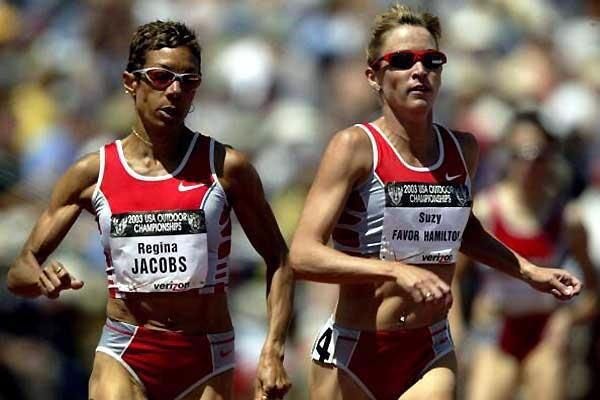The real Keira D'Amato story: Gaining 2:19 fitness on 8 miles a day
Either she's a model of unprecedented efficiency or her tale is incompletely told
According to Keira D'Amato’s Strava profile, the new American record holder in the women’s marathon ran 4,169 miles in 2019. That was the year she started to make a semi-serious competitive impact, recording a 1:13:32 half-marathon in September and a 2:34:55 marathon two weeks later in Berlin. That’s an average of just under 80 miles per week for the year.
2020 is when she really started flying. She ran a 1:10:01 half-marathon in January in Houston, still her official personal best. She broke the American record for 10 miles with a 51:23 in November in D.C., then ran 2:22:56 in December at the Marathon Project in Arizona. For the year, her Strava profile shows 4,076 miles, or an average of slightly less than 78 miles a week.
Assuming that D’Amato uploads every one of her running and other activities to Strava, this is all quite remarkable. An American woman going from 2:34:55 to 2:22:56 in a little over a year is a big story; an American woman doing so on what barely qualifies as marathon training is a huge story.
But it wasn’t through growing into an even bigger one.
In 2021, D’Amato struggled. She ran 32:16 on the track in late February, barely topped 100 miles of running for the month of June, and ran 2:28:22 at Chicago in October. She averaged 2,957 miles for the year, or 56.7 miles a week. That’s 8.1 miles a day, and fewer miles than she ran in 2018 (3,175, or 60.9 a week).
How does any 2:34 marathoner get into sub-2:23:00 shape on 80 miles a week, then progress to 2:19:12 shape on a twelve-month-long diet of 8 miles a day?
I can see a male runner with 28:30 10,000m credentials displaying this kind of progression if obviously half-assing it on the roads. But a woman in her late thirties with a career and kids? I know I just opined that being 37 isn’t a killer of marathon ambitions, but I wouldn’t call it an asset, either; the same goes for the two children she’s given birth to and helps raise.
If a woman can run 2:19:12 off three years totaling about 11,200 miles, or 10.2 miles a day, and she’s not using anything illegal, then what could she run if she trained like a world-class marathoner and dabbled in PEDs? Maybe I’m asking the wrong question.
The glowing praise of D’Amato and her portrayal as a trailblazer, someone showing women that athletic limits are imaginary, recapitulates the gushing praise of Eddy Hellebuyck in the early 2000s, after the Belgian-born American started running some unlikely masters times, including a 2:12:47 at the 2003 Twin Cities Marathon that won him the race outright. Gray-bearded message-board posters gushed that Hellebuyck was showing the world that “age is just a number”—also a popular running-world phrase in the past twenty-four-plus hours. Eventually, the mask came off, but the denials from the Hellebuycks persisted for years after they were first caught.
Eddy and his wife were both pricks in the flesh—John Brant’s article tones down what a loudmouth Shawn really is—and greedy to the core. It was easy to root for his and his “manager” wife’s exposure as rank frauds. Besides, anyone with a brain knows that Belgians learn to ride bicycles and use syringes by the age of six months.
Yet even a substantial number of the many people who disliked Eddy wanted to believe in the myth of his unaided success. With a widely popular athlete, that desire becomes proportionally stronger.
D’Amato is also not the first female American distance runner to own a national record well past the age of 35 while working as a realtor. In October 2003—about six months before Hellebuyck would pee hot for EPO—news emerged that 40-year-old Regina Jacobs, who had set an indoor world record in the 1,500 meters the previous winter with a 3:59.98, had tested positive for tetrahydrogestrinone (THG), one of Victor Conte’s greatest BALCO hits. (That New York Times story, which includes the fabulous line “Her up-and-down career began to ascend in the late 1990's after she developed a more efficient stride,” is the work of Jere Longman, who over 18 years later is still writing bad articles for the NYT.)

Jacobs was not a popular athlete, either, mainly owing to a combination of her top U.S. rival being Suzy Favor Hamilton and no one trusting her times as legitimate, especially as she kept getting older without slowing at all and in some events becoming faster. From the outside, it looked like USATF finally decided to act when it appeared that Jacobs was finally nearing the end of an already overextended run at her level. And out into the pasture of the chemically exiled did Jacobs quietly slide. Her real-estate bio says nothing at all about a running career that saw her claim 24 national titles.
Anyway, I’m not sure how I got lost on that soooooo 2003-2004 tangent, but I really want to know how D’Amato managed to do so much with so little here. I don’t want to use any D-words, but anyone who thinks it’s fair to throw inky-black shade on Letesenbet Gidey would be a hypocrite to not at least entertain the same kind of speculation here.
8.1 miles a day for a year. 10.1 for three. 2:19:12.
I swear I used to be good at math.
